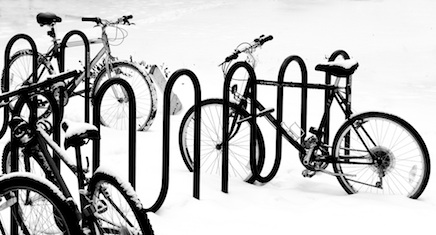Katherine Anson: January 2012 Archives

532—number of Sustainability at the University of Chicago Facebook followers, an increase of 23% over the past six months
376—number of UChicagoSAGE Twitter followers, a 60% increase over the past three months
15,000—number of people select tweets have reached
Friend us on Facebook and follow us on Twitter! Three lucky sustainability fans will be selected at random each month, through the end of April, and will receive a gift card for a free drink at Argo Tea!
 Wondering which fresh fruits and veggies are available when winter strikes and snow covers the ground? The frigid months may make it seem like produce can’t be cultivated, however, there are numerous seasonal options to choose from during the winter months. While the seasonal fruits and vegetables in Illinois and the Midwest are limited during the months of December, January and February, there are regions that grow foods that thrive in chillier weather. Buying seasonally ensures the freshest produce and encourages you to try new foods and experiment with recipes!
Wondering which fresh fruits and veggies are available when winter strikes and snow covers the ground? The frigid months may make it seem like produce can’t be cultivated, however, there are numerous seasonal options to choose from during the winter months. While the seasonal fruits and vegetables in Illinois and the Midwest are limited during the months of December, January and February, there are regions that grow foods that thrive in chillier weather. Buying seasonally ensures the freshest produce and encourages you to try new foods and experiment with recipes!
Below is a list of winter veggies and fruits, each of which are linked to simple and creative ideas for how to incorporate these foods into your diet.
Brussels Sprouts should be firm and compact, with bright green heads. These veggies are a part of the cabbage family and are high in vitamin C.
Collard Greens come in bunches and should have dark green leaves, with no yellowing. These greens are a good source of calcium and fiber.
Dates should be shiny, uniformly colored and intact, and can be stored in an airtight container in the fridge for up to a year. Dates contain antioxidants and are high in potassium and fiber.
Leeks should be firm, crisp stalks with as much white and light green sections as possible. Leeks are a member of the onion family, but have a sweeter, subtler flavor and can be eaten raw or cooked.
Persimmons are smooth, brightly colored, plump, glossy and well rounded. This fruit originates from Asia and is an excellent source of fiber.
Sweet Potatoes should be firm, small-to-medium sized with smooth skin. A member of the morning glory family, sweet potatoes are high in vitamins A and C.
Turnips come in all shapes and colors; small to medium ones are sweetest. They may be eaten raw or cooked and are a good source of vitamin C.
The University of Chicago has made a commitment to become a more bicycle-friendly campus. As a part of this commitment, and in an effort to support the City of Chicago’s aim to become a leading city for cyclists, Facilities Services has established an updated Abandoned Bike Policy (PDF).

Any abandoned or improperly locked bike is subject to removal by Facilities Services. The impounded bicycle will be stored at the Young Building, 5555 S. Ellis Avenue, for 10 business days. After 10 business days, the bicycle will be donated to charity. This policy is intended to help maintain the safety and beauty of the University of Chicago’s campus, to manage the capacity of existing bike racks by removing abandoned bikes, and to ensure accessible walks and ramps are maintained.
While Facilities Services regularly removes improperly locked or abandoned bikes throughout the year, two formal campus bike sweeps take place annually: one at the conclusion of Fall Quarter and another prior to Spring Convocation. Over the past year, the University has donated over 70 bikes to recycles partner, Blackstone Bicycle Works.
To report abandoned or improperly locked bikes, or to request additional bike racks, please telephone the FS Service Center at 773-834-1414.
 Aaron Swanton and Chris Willard from Blackstone Bicycle Works were surprised by the number of bikes ready for donation this past December.
Aaron Swanton and Chris Willard from Blackstone Bicycle Works were surprised by the number of bikes ready for donation this past December.
 Kevin Ahn, Facilities Services’ Client Services Manager, assists Blackstone with the most recent bike donation.
Kevin Ahn, Facilities Services’ Client Services Manager, assists Blackstone with the most recent bike donation.
